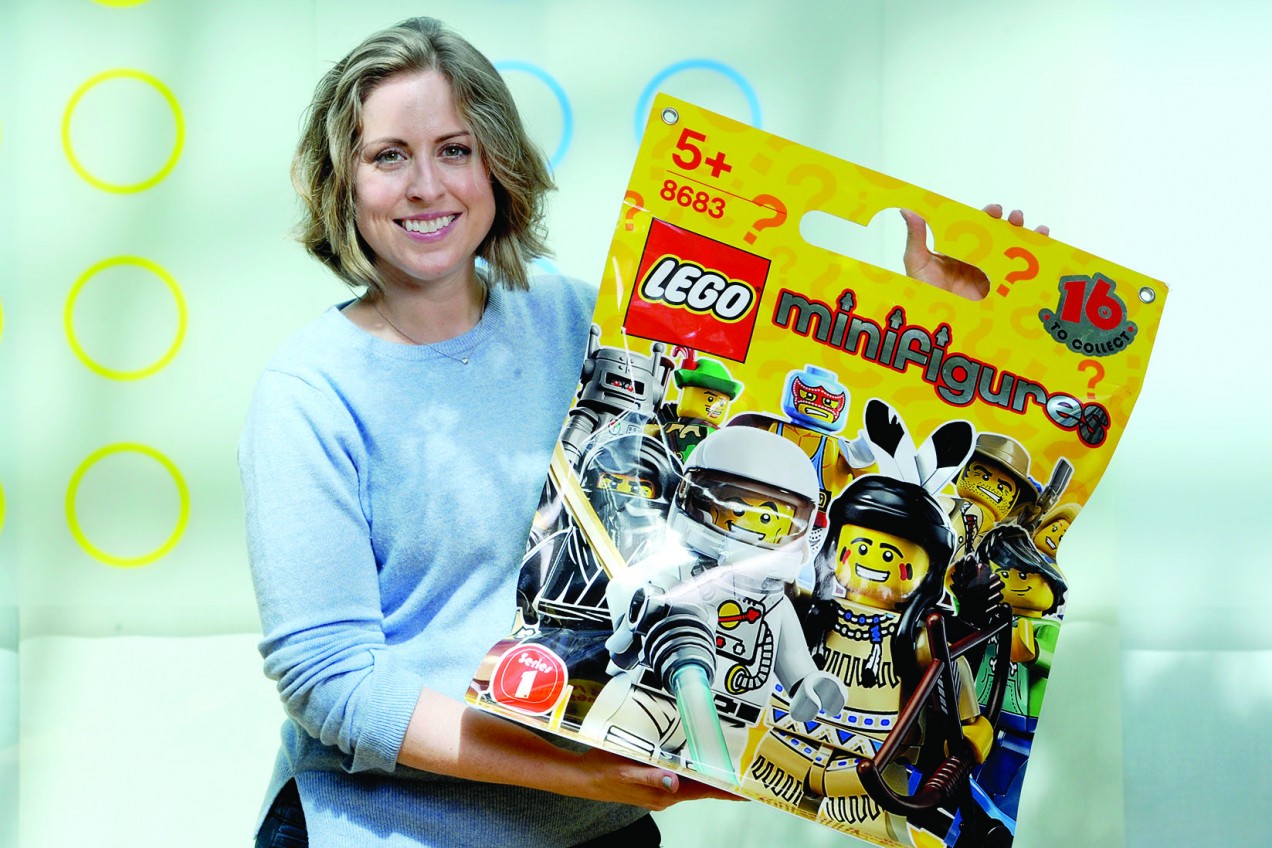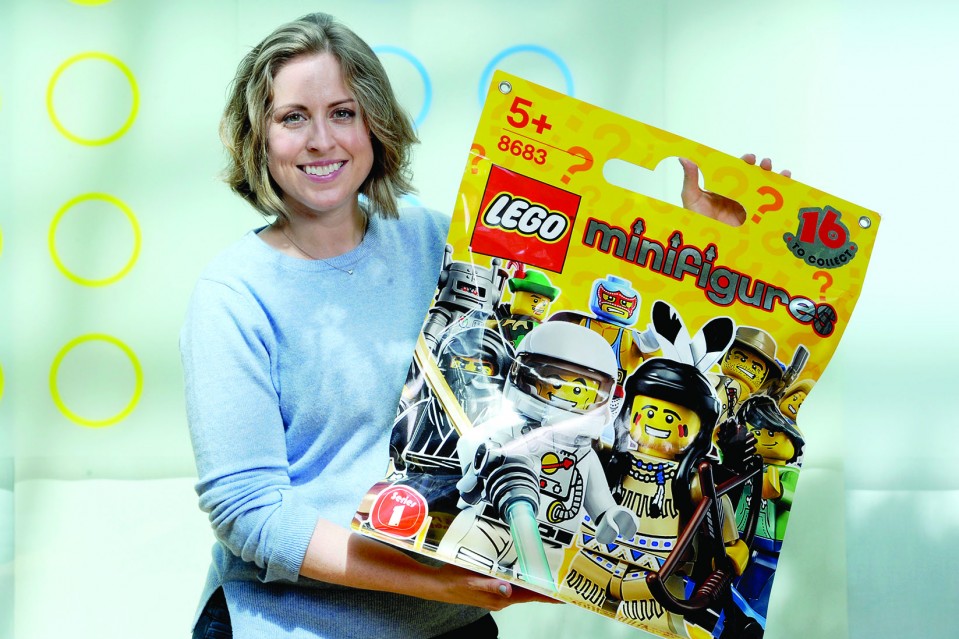

MIT’s Lego Legacy
Iconic toy maker supports learning through play.

MIT graduates often say that their love of tinkering and creating emerged at a young age—and many profess a continuing obsession with Lego toys. The interlocking bricks, gears, and parts have spurred learning through play since 1949, and today Tara Wike ’97 contributes to that mission of inspiring creativity as a Lego designer.
After moving to Denmark with her husband, Wike started working at Lego in 2011 in the department that made Minifigures collectibles. She began by creating elements—her first was a lifeguard float—and within a few months became the design lead for the division. Soon after, Wike was named design lead for Lego Ideas, a department that allows customers to propose a set for the company to build and sell. “I did not think that I would become a toy designer, and that was not my intent,” says Wike, who initially used her architecture degree to work in computer graphics and 3-D modeling. “But I had the software skills.”
“The best part about working at Lego is that we are constantly being reminded to look at things from the kids’ perspective,” says Wike, who has a five-year-old son. “It kind of forces you to not take anything too seriously. At the end of the day, it’s still a company; we still have Excel spreadsheets to fill out and budgets to adhere to. But as designers, we are the voice of the child.”
Women of NASA
When the idea for a Women of NASA set came across her desk through the Lego Ideas platform in summer 2016—after securing the requisite 10,000 votes through the crowdsourcing platform in just two weeks—Wike and her colleagues quickly agreed to produce it. “Lego Ideas is super fun,” she says. “Since the service is for fans who have designed their own sets that they would like to be produced, we get to do stuff that we wouldn’t otherwise get to do.”
The set officially launched in stores in November 2017—and became the number one toy on Amazon within 24 hours, quickly selling out. It includes Margaret Hamilton, a former MIT and Lincoln Lab software engineer who worked on the Apollo project, plus Nancy Grace Roman, Mae Jemison, and Sally Ride. “This one struck a chord because it was a fun build, and it’s a message that resonated with everyone on our team,” says Wike. “At Lego, we have a mission to inspire and develop the builders of tomorrow. We hope everyone gets inspired by the process of putting the pieces together, and hopefully, by getting it in the hands of millions of kids, little boys and girls, people will also learn their story.”
That was the intent when Maia Weinstock, the MIT News Office deputy editor, created the set. After stumbling across some Minifigures designed to resemble real people in 2009, Weinstock started to create her own Minifigures and tweet about them as a way to raise awareness about scientists and engineers. “You take existing Lego parts and you just sort of mix and match them so they look like people,” says Weinstock, who has created more than 100 of the look-alikes.
Weinstock has created Minifigures of some well-known members of the MIT community, including the late MIT Institute Professor Mildred Dresselhaus; Department of Chemical Engineering head Paula Hammond ’84, PhD ’93; and Vice President for Research Maria T. Zuber. In 2013, Weinstock learned about Lego Ideas from a set featuring female Minifigures that the company sold as the Research Institute, highlighting women in science. She submitted two other Lego Ideas projects before coming up with Women of NASA.
“I have long been interested in science history and am becoming more of a real historian of science, focusing on women who’ve been overlooked as far as the important contributions that they’ve made to STEM history,” says Weinstock, who taught a new MIT course entitled History of Women in Science and Engineering in the fall. “There are very few products that rival how much influence a Lego set could have on young kids. It’s wonderful to be able to bring these women’s stories to classrooms everywhere, to people’s homes, kids’ bedrooms.”
Learning through play at the Media Lab
The essence of Lego’s mission, learning through play, is embodied in the work of the late MIT professor Seymour Papert. In 1985, Papert and the Media Lab began a long collaboration with the Lego Company. Today, the Lego Foundation and the Institute’s Lifelong Kindergarten group continue exploring new ways to engage children in creative and playful learning experiences.
Over the years, MIT and Lego have collaborated on projects like TC Logo, the first programmable Lego kit; Mindstorms, a line of robotic toys; and WeDo, a robotics kit for children. In 1989, the company endowed a chair at the Media Lab, and Papert became the first Lego Professor of Learning Research. Following his death in 2016, Lego also created a graduate student fellowship program in his honor.
Although not produced in conjunction with Lego, Scratch, a visual programming language for kids developed at the Media Lab in 2007, uses elements that mirror the idea of Lego blocks. By clicking graphical blocks together, Scratch allows even young children to design and code through the computer program in an easy, visual way. Today, more than 20 million students, teachers, and parents around the world use the tool.
The MIT-Lego connection runs not only through Media Lab collaborations but through years of projects all over campus—from service projects that assemble Lego biology kits for local schools to use in K-12 outreach programs through the Edgerton Center and the STEM Summer Institute. And Wike isn’t the only alum using the company’s products at work: Amir Hirsch ’06, SM ’07, cofounder of Flybrix, offers people of all ages a chance to build flying drones from a Lego kit.
“As I think about the future of our relationship with the Lego Company,” says Mitchel Resnick, the Lego Papert Professor of Learning Research at the MIT Media Lab, “it’s not just about bringing product to the world, but about bringing change to the world.”